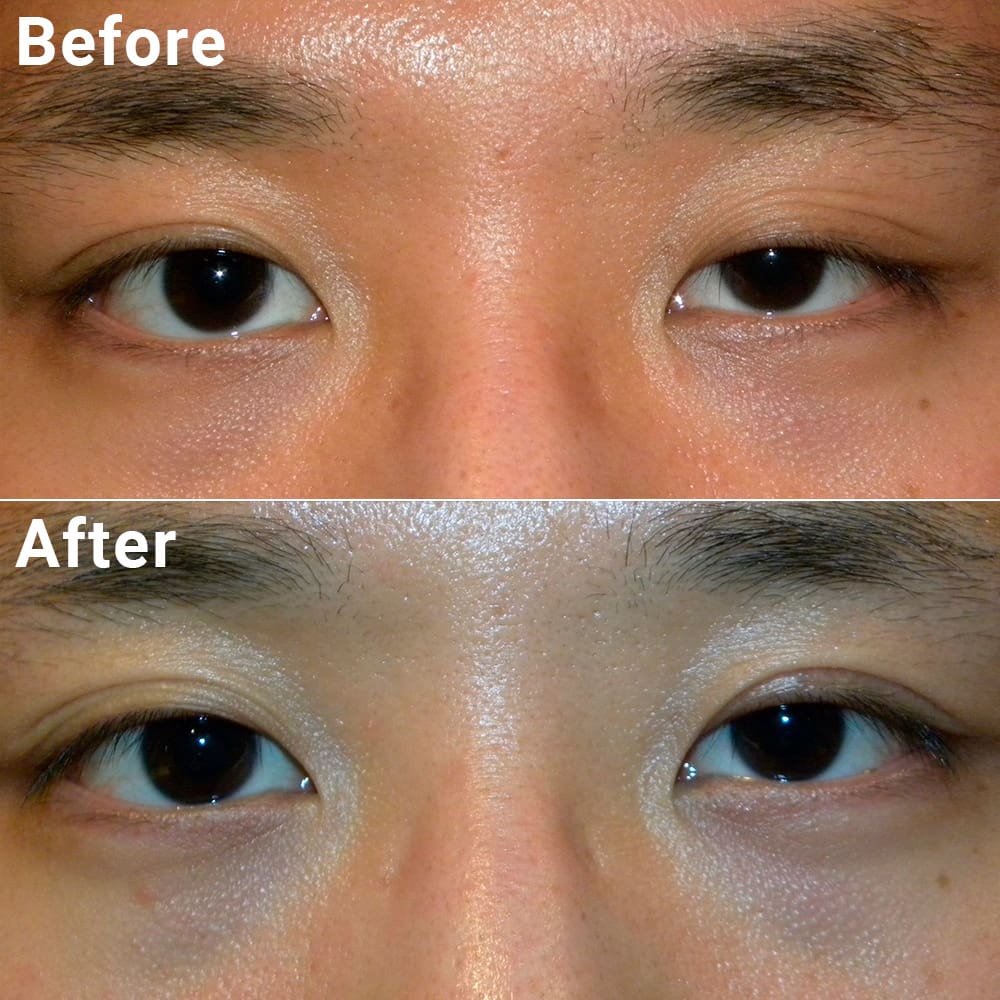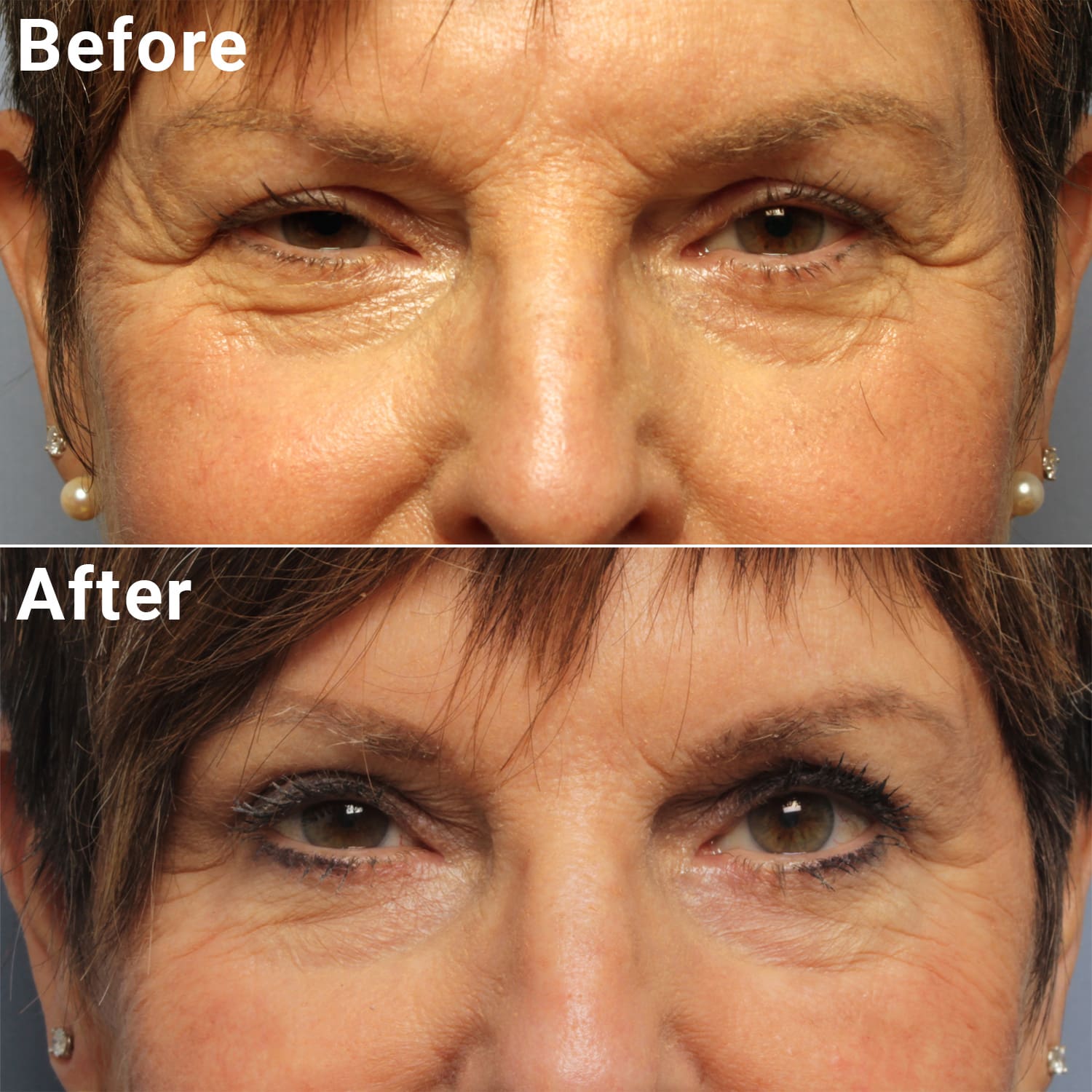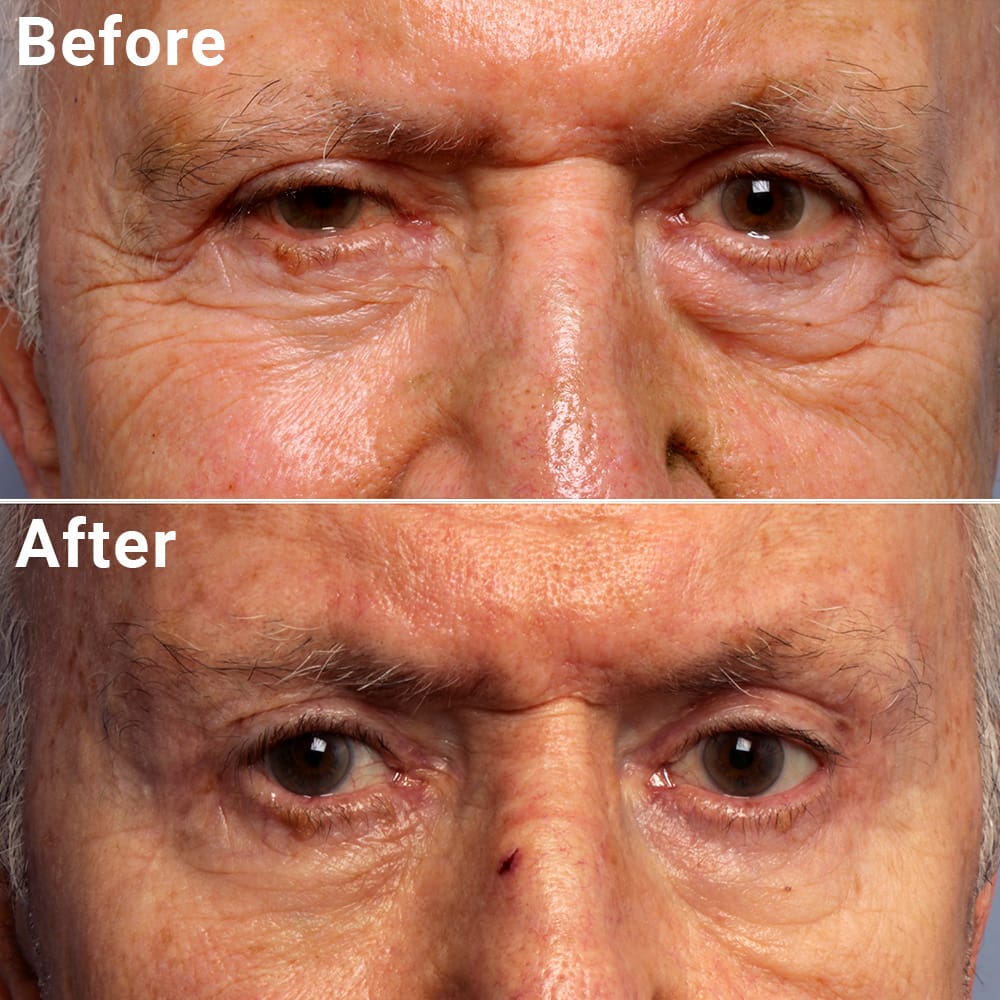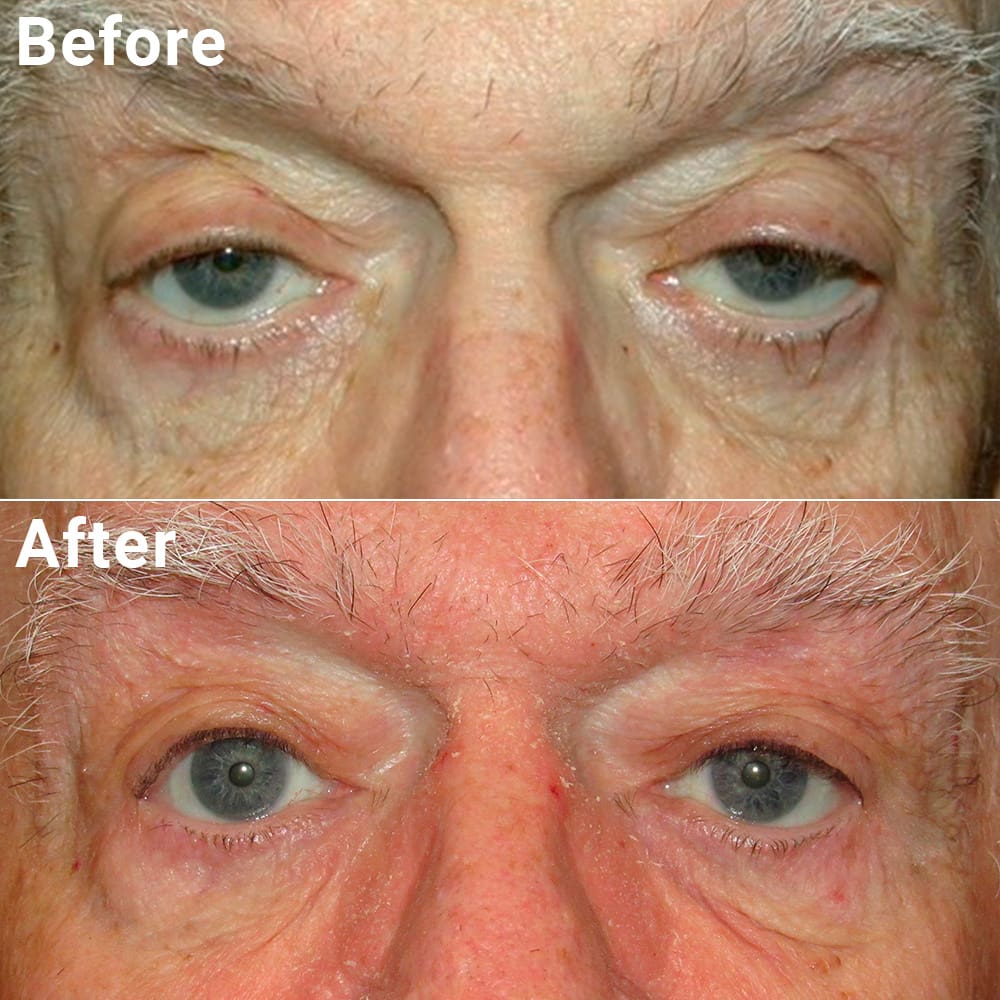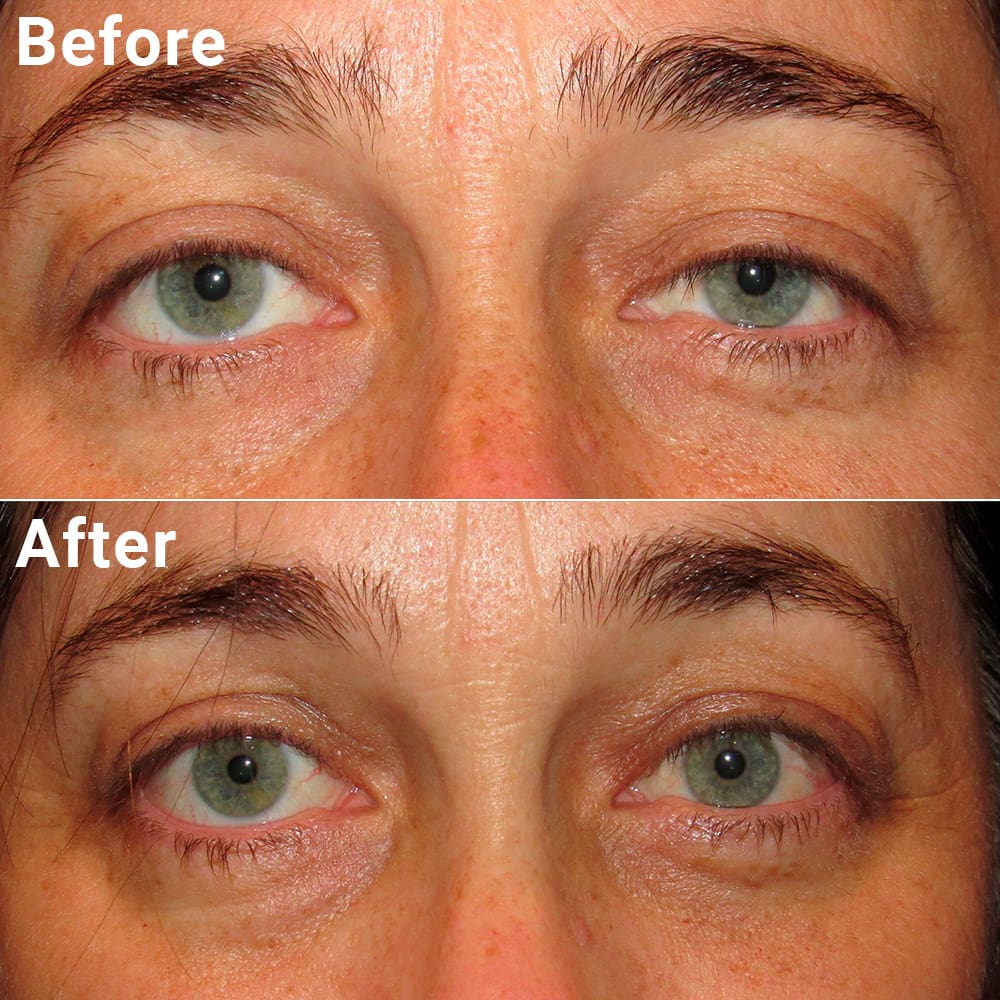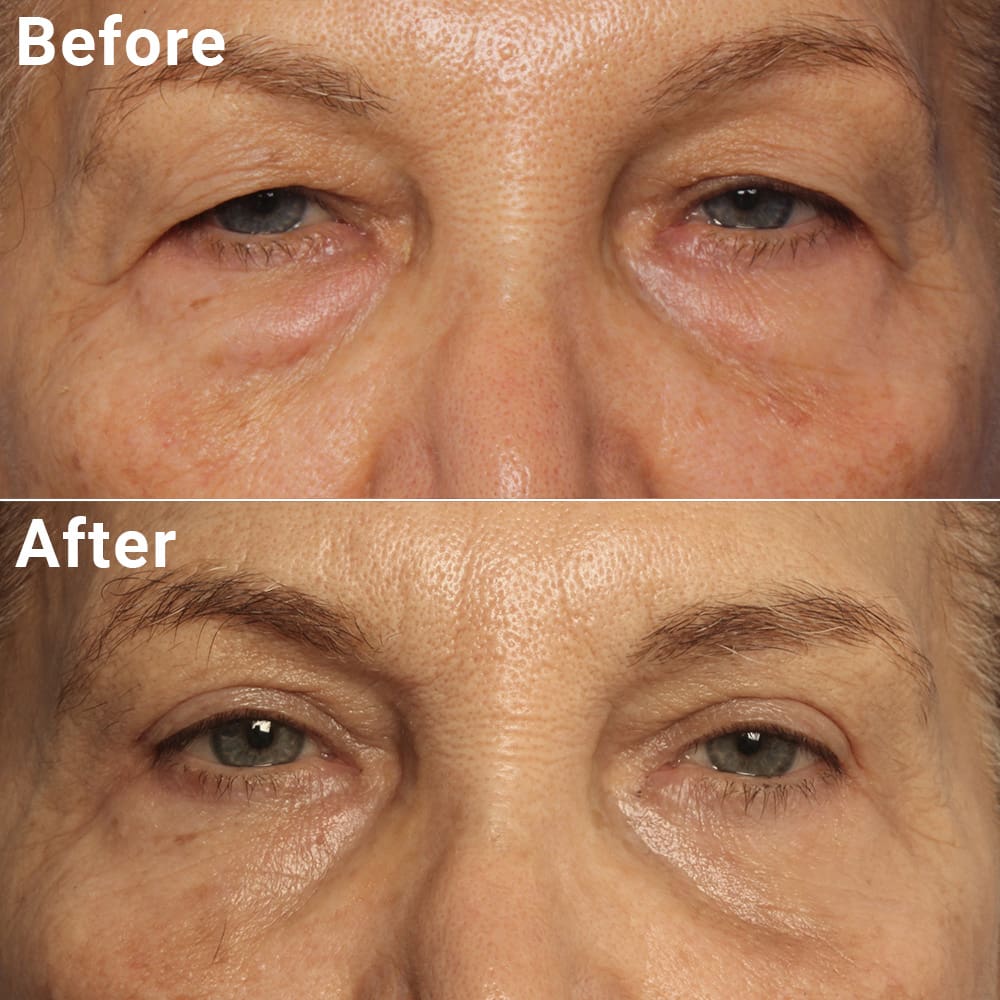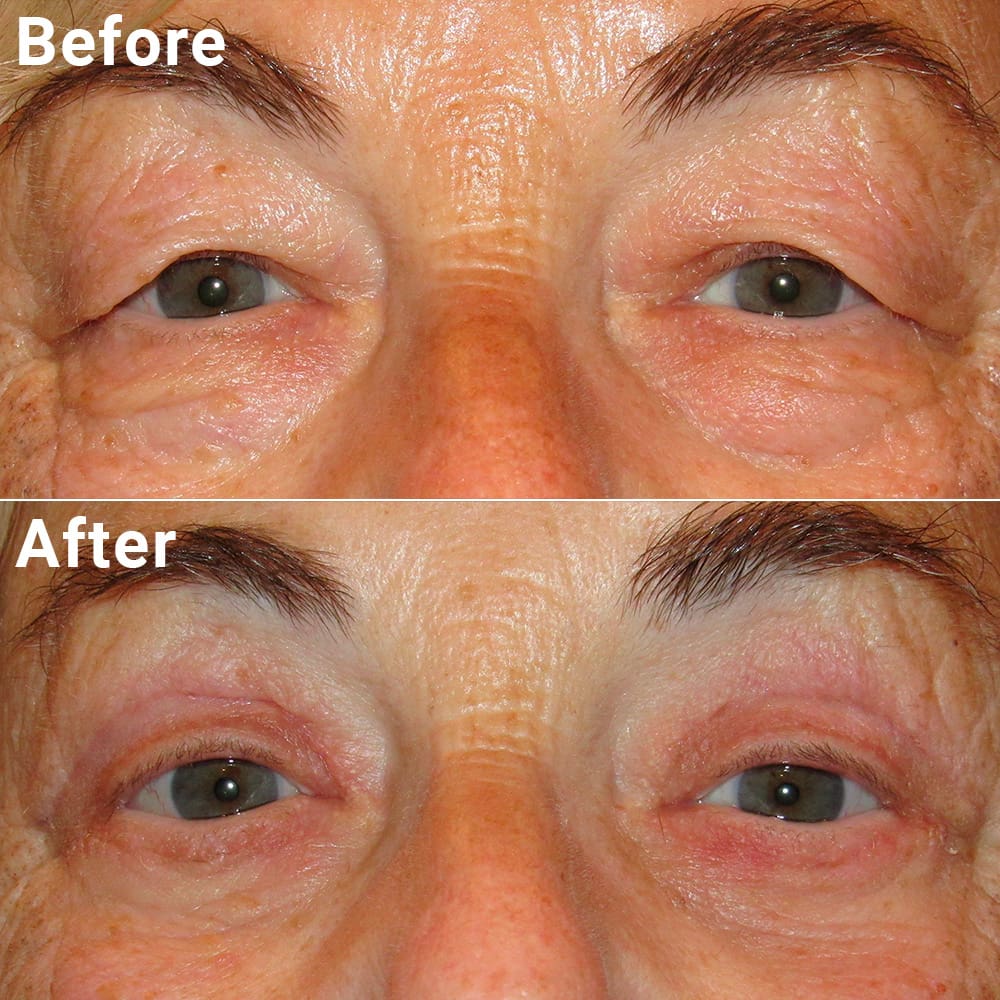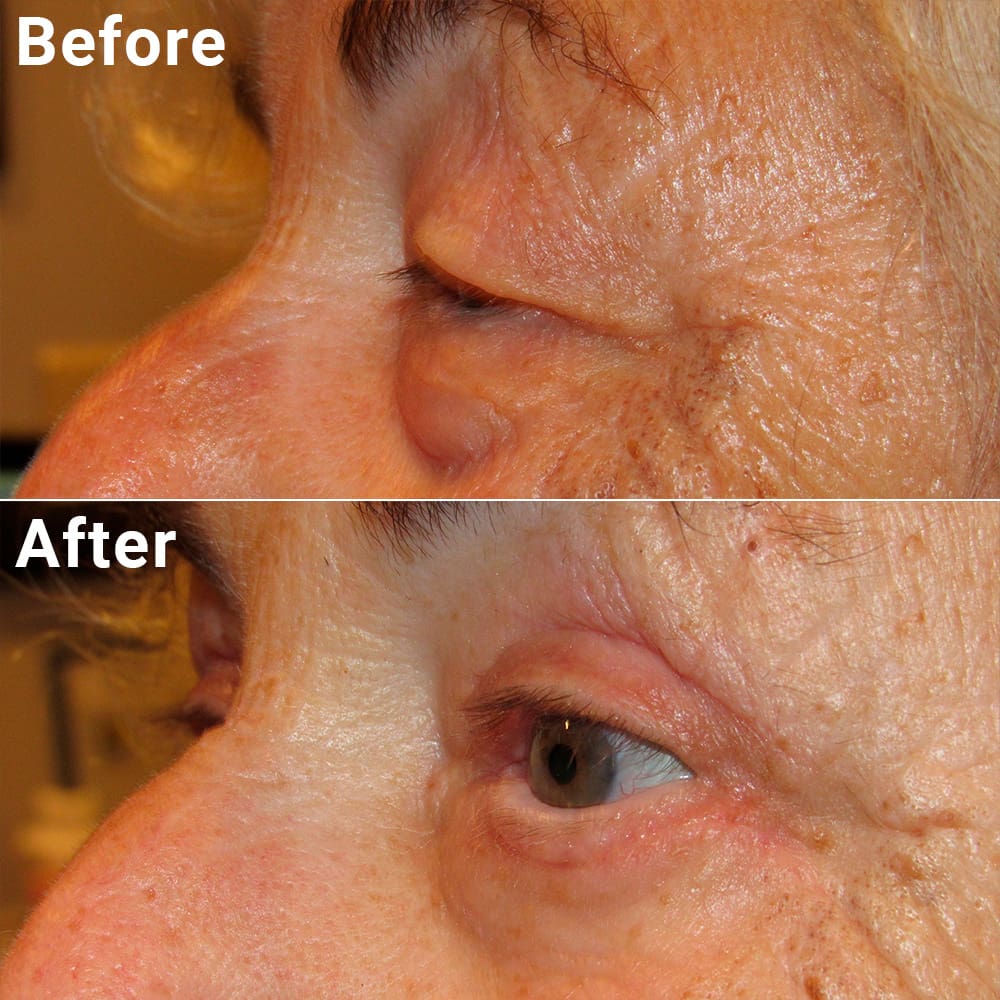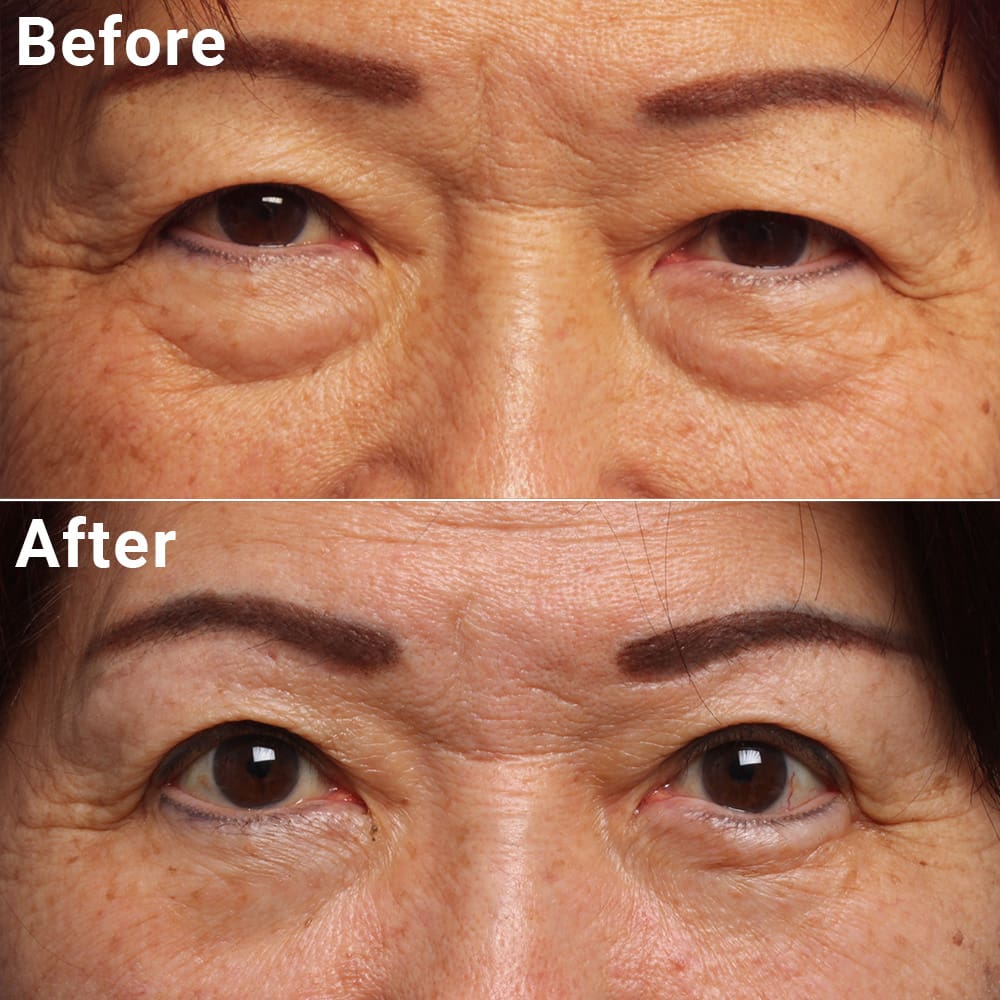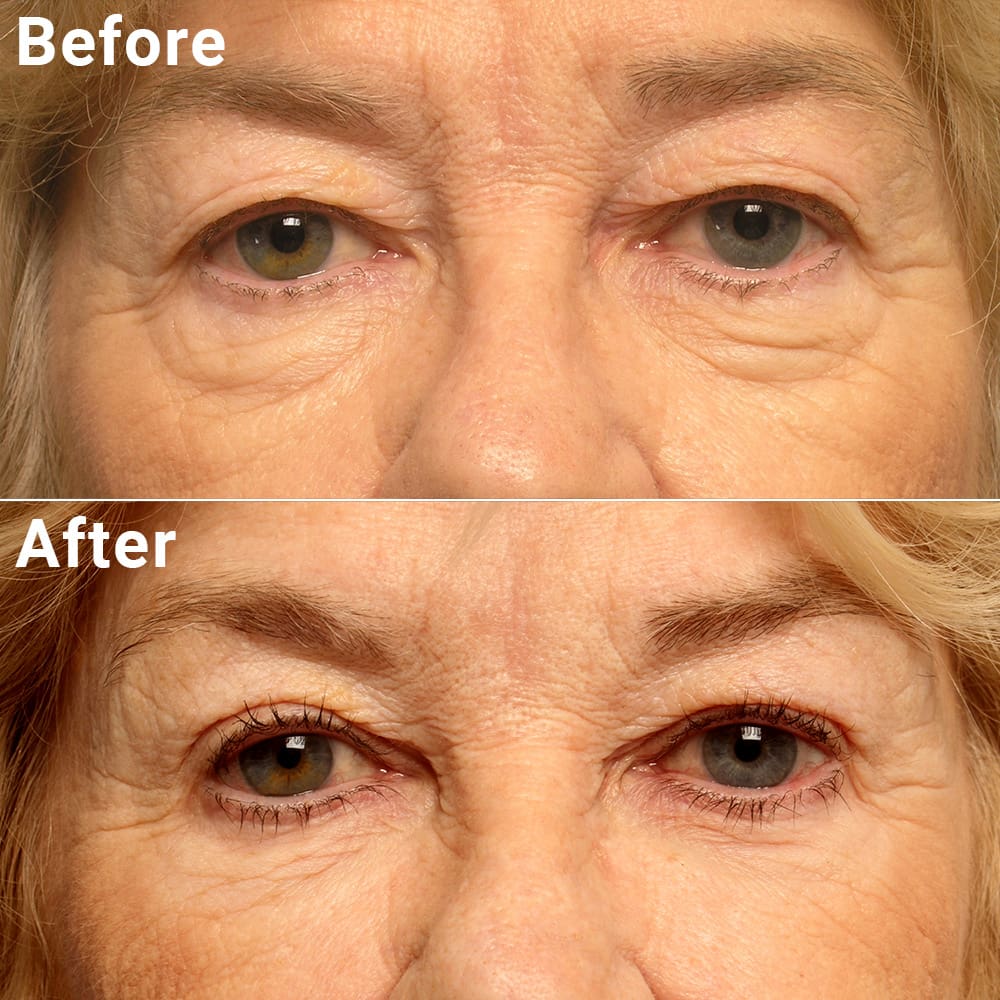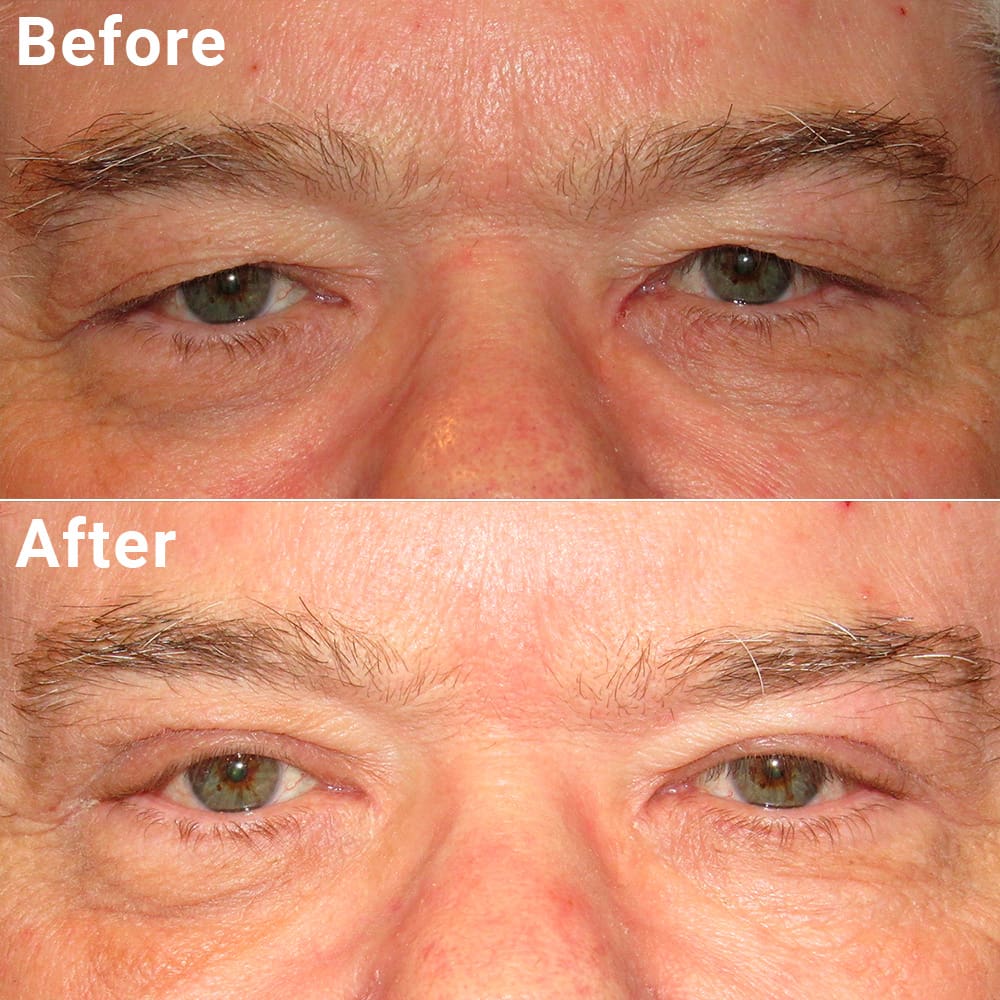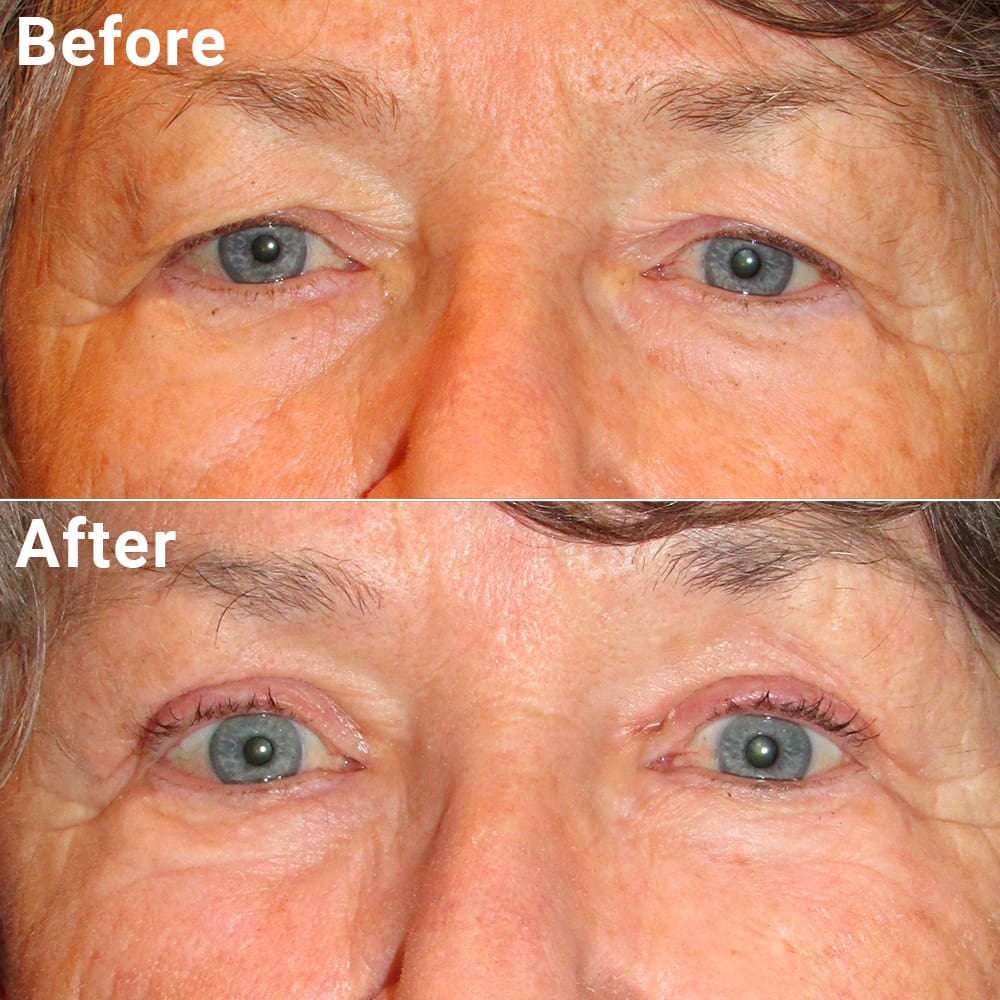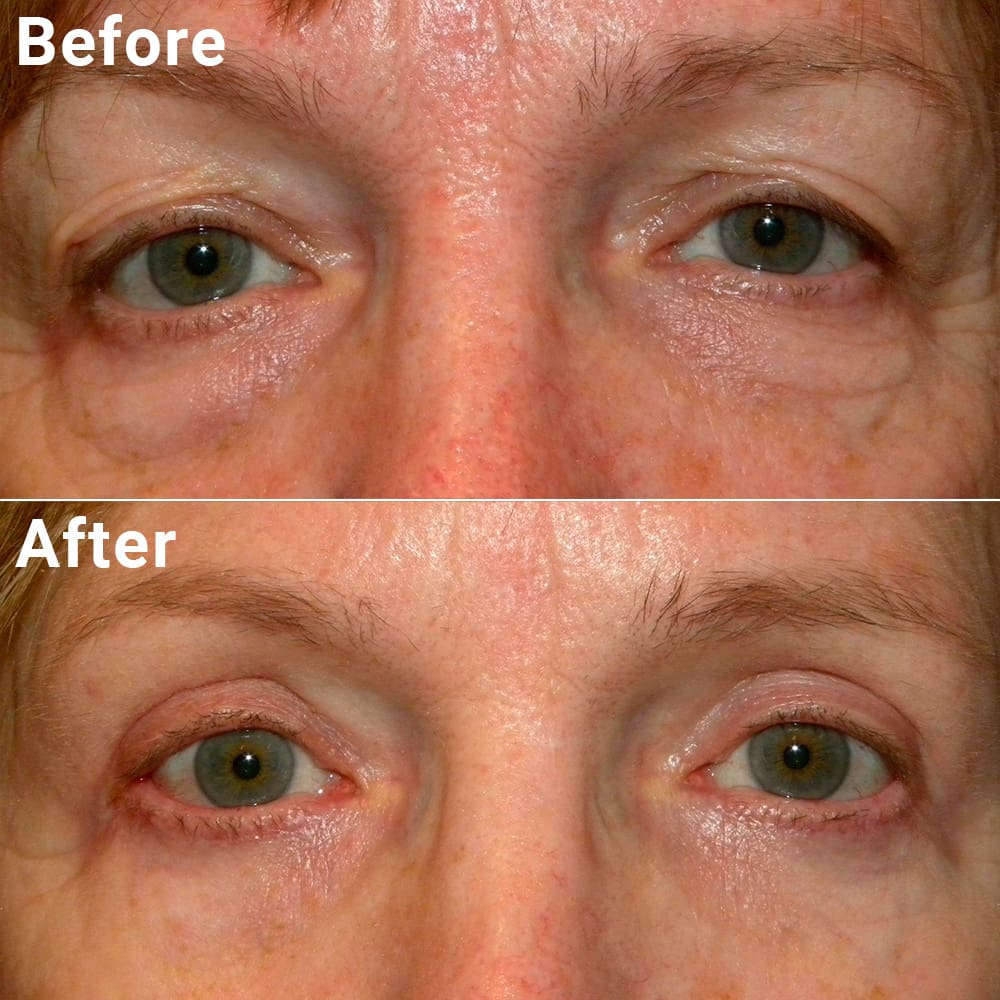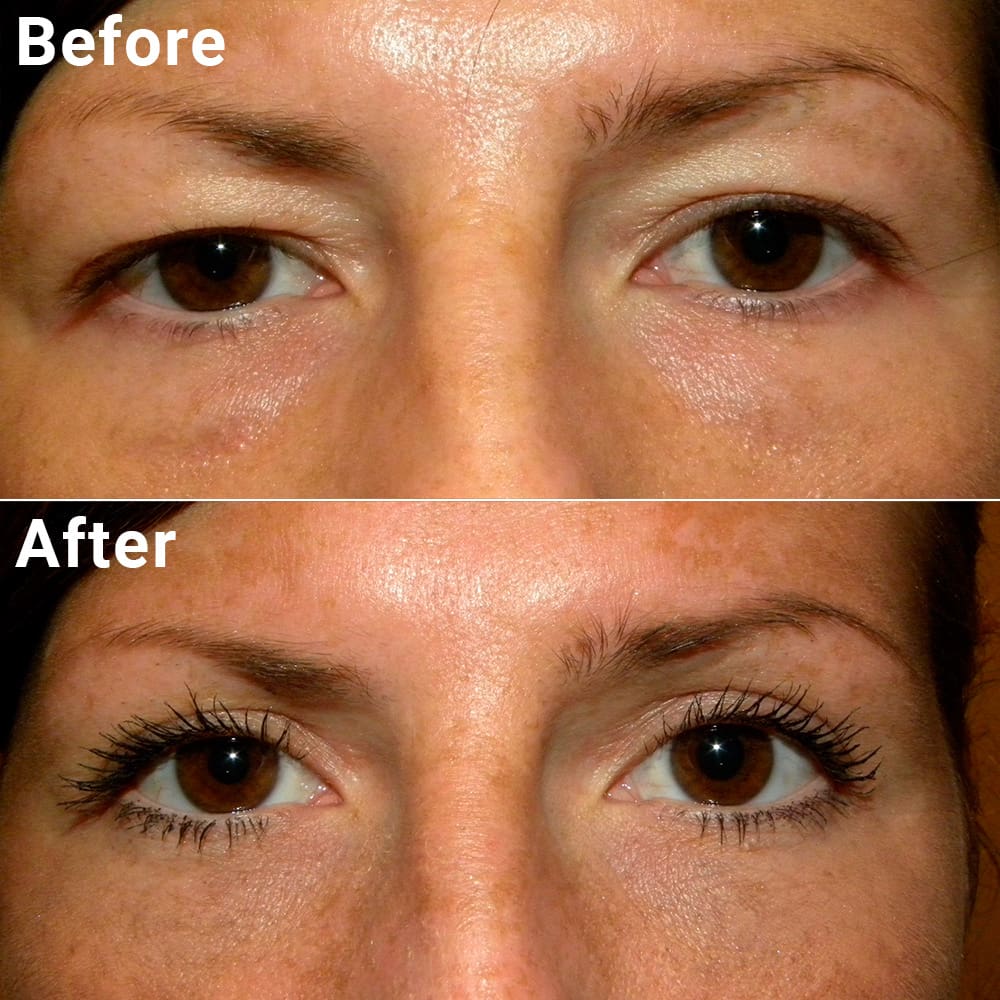Droopy Eyelids (Blepharoptosis or Eyelid Ptosis)
What Is Ptosis?
Ptosis (pronounced TOE-sis) is the medical term for a droopy upper eyelid. It can affect one or both eyes and may be mild or severe. In some cases, the eyelid may cover part or all of the pupil, blocking your vision.
Ptosis that’s present at birth is called congenital ptosis. In children, it often happens because a muscle in the eyelid called the levator muscle didn’t develop properly. In adults, ptosis is usually caused by:
• Aging (the levator tendon stretches or loosens)
• Eye surgery (like cataract surgery)
• Injury
• Muscle or nerve problems
Ptosis may also be related to certain medical conditions, such as:
• Myasthenia gravis (a disease that causes muscle weakness)
• Horner syndrome (a nerve-related condition that affects one side of the face)
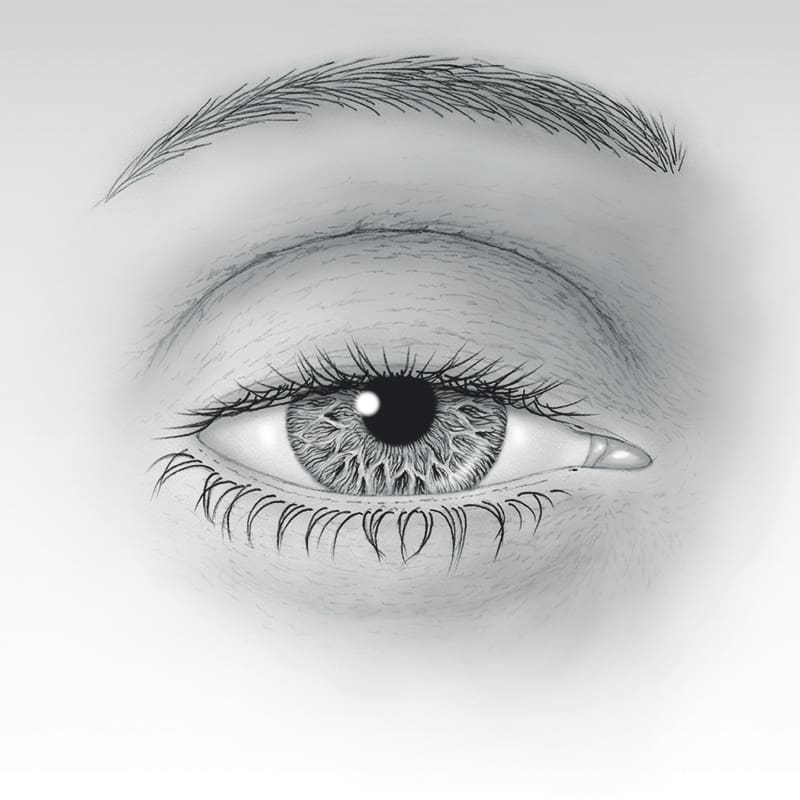
What Are the Symptoms?
Common symptoms include:
• Trouble keeping your eyes open
• Forehead tension or eye fatigue from trying to lift your lids
• Needing to tilt your head back or use a finger to lift the lid
• Blurry vision or eyestrain, especially while reading
In children, ptosis can lead to:
• Lazy eye (amblyopia)
• Eye misalignment (strabismus)
• Astigmatism or blurred vision
Treatment Options
When Is Surgery Recommended?
Ptosis surgery may be recommended to:
• Improve vision or reduce eyestrain
• Support healthy vision development in children
• Improve appearance or eyelid symmetry
What Happens During Surgery?
In most cases, the levator muscle is tightened to raise the eyelid. Depending on your anatomy and the strength of the muscle, your surgeon may:
• Make the incision on the inside or outside of the eyelid
• Use a sling procedure to help the forehead muscle lift the lid (especially in children or when the eyelid muscle is weak)
Children with ptosis should have regular eye exams before and after surgery to make sure their vision develops properly.
Surgery is typically performed on an outpatient procedure:
• Young children receive general anesthesia
• Older children and adults may have twilight sedation
• In some cases, surgery can be done in the office
Risks and Complications
All surgeries carry some risks. For ptosis surgery, these may include:
• Bruising or swelling (usually resolves in 1–2 weeks)
• Bleeding or infection (rare)
• Dry eyes, which may make contact lenses uncomfortable
• Eyelid position that’s higher or lower than expected
• Uneven shape or curve of the eyelid
• Need for a second surgery to fine-tune the result
Your surgeon will talk with you about what to expect. While perfect symmetry isn’t guaranteed, most people are pleased with the results and notice a real improvement in both vision and appearance.
Summary
Ptosis is a common condition that can affect vision and quality of life. Surgery is often recommended to improve how the eyelid functions and looks. Your oculofacial plastic surgeon will guide you through the options and help you find the best treatment based on your needs.
